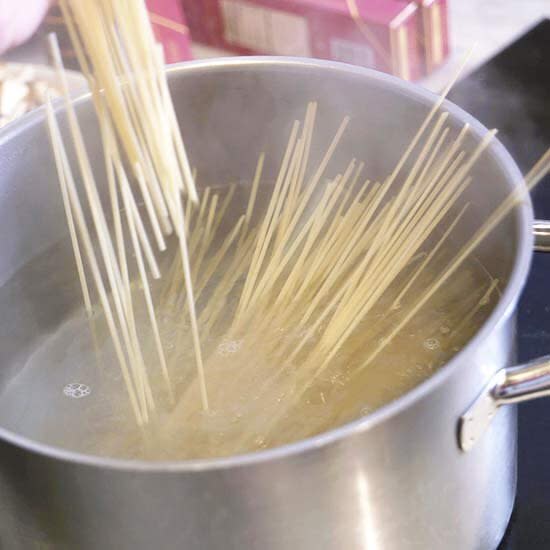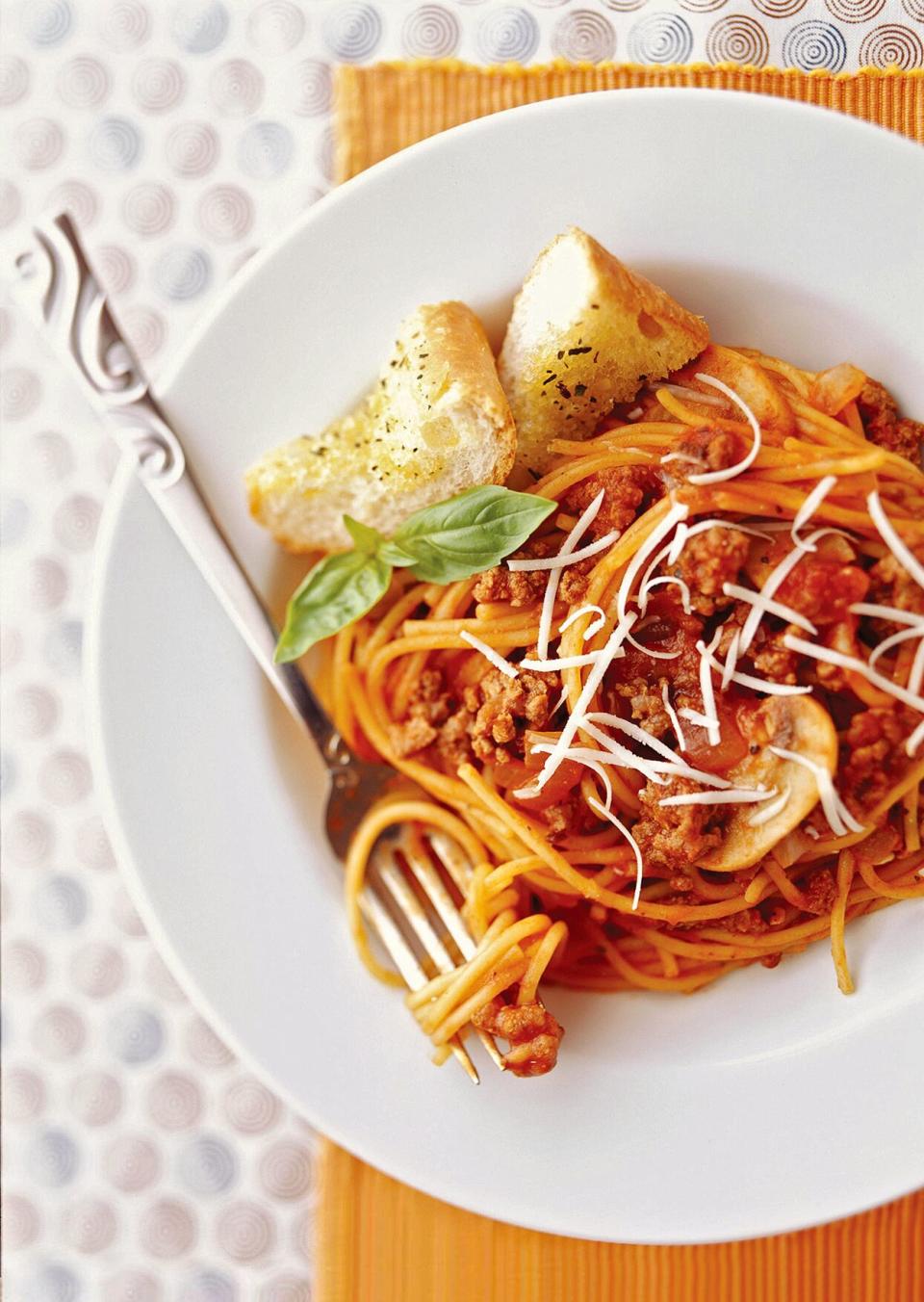How to Make Spaghetti That's Cooked to Al Dente Perfection
Although spaghetti often refers to a pasta dish with tomato sauce (usually marinara sauce), it is really just the name of the pasta shape. Spaghetti is an Italian name for long, thin strings of pasta, typically made of semolina flour and water. Because of its shape, spaghetti pairs well with light and thin sauces that will cling to the pasta. It can be used in a variety of dishes such as baked spaghetti, spaghetti carbonara, a pasta salad, and it can even be added to soups. Once you know how to cook it, the options are endless.

Andy Lyons
How to Cook Spaghetti
It simply comes down to boil, cook, drain, and top, but our Test Kitchen has come up with a few tips and tricks to achieve the best results for making spaghetti.
Step 1: Bring Water to a Boil
Fill a large pot ($30, Bed Bath & Beyond) with plenty of cold water (use 3 quarts of water for every 4 to 8 ounces of dried spaghetti). If desired, add salt to the water for seasoning. Bring the water to a rolling boil.
How to make spaghetti noodles not stick: Some people add a tablespoon of olive oil or cooking oil to the water to keep the spaghetti from sticking together. However, our Test Kitchen recommends not adding oil because it keeps your spaghetti sauce from adhering to the pasta. To prevent the spaghetti from sticking together, make sure you use enough water, cook it at a rolling boil, and stir the spaghetti occasionally during cooking.

Step 2: Add the Spaghetti Noodles
Once the water is boiling, add the spaghetti a little at a time so the water doesn't stop boiling. Reduce the heat slightly so the water doesn't boil over; boil, uncovered, until the spaghetti is al dente, using the package directions as a guide for timing.
Test Kitchen Tip: You don't need to break spaghetti noodles in half so they all get submerged in the boiling water at once. After just 30 seconds or so, the noodles will soften and the entire noodle will end up in the boiling water.
Step 3: Cook Spaghetti Until Al Dente
To bring out spaghetti's full, nutty flavor, cook it until it has the firm slightly chewy texture known as al dente (Italian for "to the tooth"). Test near the end of cooking time by giving it a taste.
Step 4: Drain and Serve
When the spaghetti is cooked al dente, drain it in a colander ($25, Target) and shake well to remove excess water that could make your sauce runny. Toss noodles with your favorite sauce (our classic spaghetti sauce recipe is a winner!)
Test Kitchen Tip: Do not rinse the spaghetti because it removes the light coating of starch that helps sauces and seasonings cling. Pasta continues to cook after draining, so serve it immediately. If your drained spaghetti needs to sit before using, return it to the warm cooking pan (off the heat), toss it with a little butter or olive oil to prevent sticking, and cover for up to 15 minutes. Remember, adding oil will inhibit sauce clinging to the pasta, so try to keep it minimal.
Spaghetti Shopping and Storage
When it comes to buying dried spaghetti, the selections are numerous. Whole wheat and multigrain spaghetti offer more fiber than the traditional semolina variety. Vegetable pastas, such as spinach or beet, add colorful options. And for gluten-free meals, look for pasta varieties made from corn, rice, chickpea, or quinoa spaghetti (also try our gluten-free marinara sauce). Store dried spaghetti in the package or a covered container in a cool, dry place for up to one year.

Blaine Moats
Delicious Spaghetti Toppers to Try
Start with cooked spaghetti topped with marinara sauce and add these toppers for a twist on the classic spaghetti recipe.
Cooked, drained, and crumbled sweet or spicy Italian sausage.
Shards of Parmigiano-Reggiano made by scraping a vegetable peeler across the chunk of cheese.
Slivered Kalamata olives, crumbled feta, and snipped fresh oregano.
Dried tomatoes, fresh basil, and coarsely chopped marinated artichoke hearts.
Shredded fresh spinach and crumbled crispy bacon.
Long, thin ribbons of carrot, zucchini, and/or summer squash sautéed with minced garlic and olive oil.
Crumbled blue cheese and toasted pine nuts.
Purchased cooked meatballs and grated pecorino cheese.
Sautéed chopped leeks and sliced mushrooms with chopped toasted almonds.
Roasted red sweet peppers and shredded Asiago cheese.
For more creative ways to make spaghetti try our top-rated Inside-Out Spaghetti Pie. Take your spaghetti noodles for a less traditional saucy spin with our Bacon and Egg Spaghetti or Mac and Cheese Spaghetti. These make excellent choices for kids (and adults) who aren't big fans of tomato sauces.

